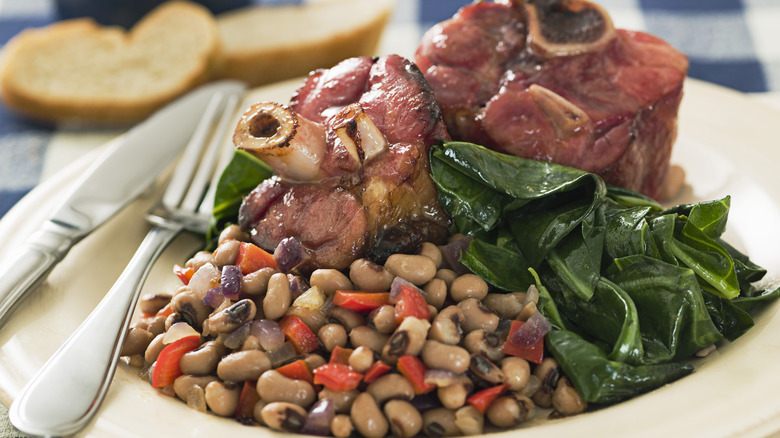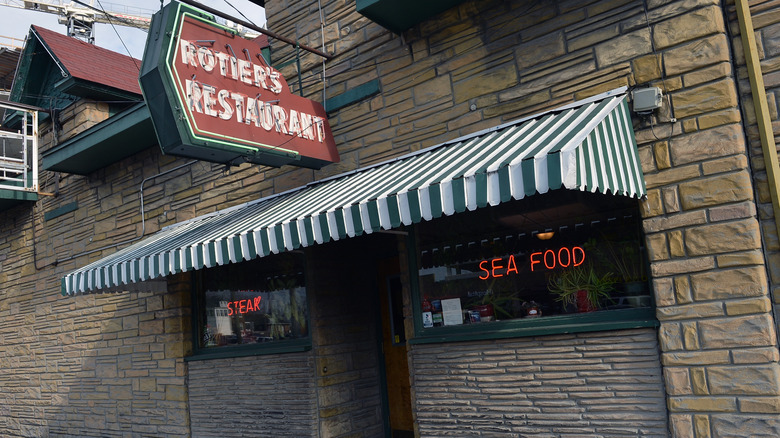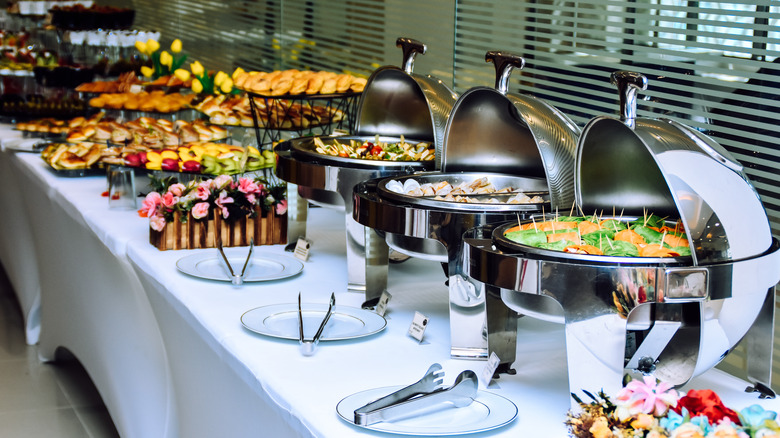How Are 'Meat 'N' Three' Restaurants Different From Buffets?
There's something decadent and primal about a buffet. For a set price that is sometimes frighteningly low or shockingly high, one gains access to an unlimited quantity of food. You can feast to your appetite's delight at a fresh salad bar, sample myriad dishes and appetizers at one of the ubiquitous Chinese-American buffets that dot the nation, and have a beyond-outsized brunch at an upscale hotel. We've even profiled some of the best in the nation, like Las Vegas' aptly named Bacchanalia Buffet, Chicago's Polish shrine, Red Apple, and The Nordic, a pricey, seafood-centric spot in Rhode Island.
Of course, for as generous as the portions are at a buffet, there are also some things to be wary of. Anyone who has served food — in any setting or style — will confirm how difficult it can be to ensure that everything goes off without a hitch. Our list of 13 items that might make you reconsider a buffet includes some obvious red flags, like food being held at improper temperatures, and some less apparent, such as too few servers or food pans that are too large.
Comparatively speaking, a "meat 'n' three" seems positively genteel next to its close culinary cousin. But what is this Southern staple that offers hefty portions, and how does it diverge from buffet-style service?
Come hungry
It's impossible to know exactly where, when, and why meat 'n' three restaurants popped up across the American South, but Discover South Carolina draws on food historian John Egerton's theory that "blue plate specials" are the most likely antecedent. These consisted of a set plate of food, generally a meaty entrée and a few sides, for a set price. Enterprising chefs who realized they could attract more customers with more offerings began to expand beyond the blue plate and give customers more options with which to fill their plates.
Step into a modern meat 'n' three and you will immediately recognize a welcome similarity to the cafeterias of grade school, though the scents will likely hit you first. Southern Living breaks down the mechanics of how things work. Traditionally, there is some signage indicating what's available for the day, but it generally consists of classics of the Southern culinary canon. The chief choice to make is what meat to go with. Fried chicken, smothered pork chops, pot roast, fried catfish, and chicken casserole are all commonly seen. Next, get your three side items decided on, which range from starches like mashed potatoes and macaroni and cheese to cold crisp coleslaw, seasonal sliced tomatoes, collard greens, and green beans. To top it off, you can usually expect a biscuit, roll, or corn muffin, which you'll need for sopping up all the last little bits or sauces and gravies.
Where do they diverge?
Similarities abound when it comes to a buffet and a "meat 'n' three." Both appeal to folks looking for good value. While the food at a buffet or meat 'n' three may be of high quality, neither are typically considered fancy affairs. And don't sit at your table waiting for a server to take your order; support staff at both perform many of the functions of a server — and busser — but tableside ordering isn't one of them. They are, however, fundamentally different in a few ways.
A buffet, as DelightedCooking points out, is self-service. Once through the doors and seated, a diner can load their own plate with as much food as they care for. As explained above, this is not so at a meat 'n' three. Despite copious choices, your money gets you what the name implies and maybe a roll of some sort. The food there will also be plated for you, though by expert hands that have experience loading you up with ample portions. Finally, while there are exceptions to every rule, meat 'n' threes are by-and-large purveyors of cooking that has its roots in the South, notes Eater. Buffets, on the other hand, can feature anything from sushi to prime rib.


